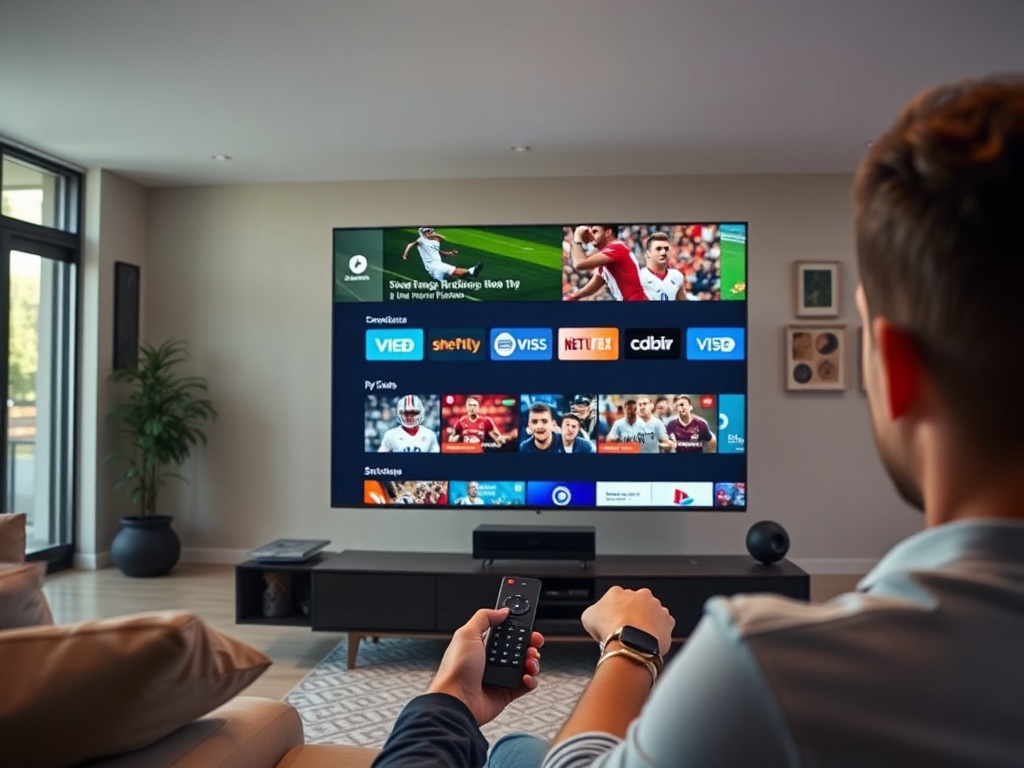Revolutionizing Sports: The End of the Cable Bundle Era
The landscape of sports broadcasting is undergoing a seismic shift, one that promises to redefine how fans engage with their favorite teams and events. As technology advances and consumer preferences evolve, the traditional cable bundle era is rapidly becoming obsolete. This transformation offers both challenges and opportunities for broadcasters, leagues, and viewers alike.
The Rise of Streaming Services
In recent years, streaming platforms have surged in popularity as consumers seek more flexibility and control over their viewing experiences. No longer are fans tethered to expensive cable packages filled with channels they don’t watch; instead, they can subscribe to specific services that cater directly to their interests. Major players like ESPN+, Amazon Prime Video, and Peacock have entered the fray, offering live sports coverage without the need for a full cable subscription.
This shift has been particularly impactful for younger audiences who prioritize on-demand content over linear television. With mobile devices allowing access anywhere at any time, these viewers are changing what it means to be a sports fan in today’s digital age.
The Impact on Traditional Broadcasters
As streaming services gain traction, traditional broadcasters face mounting pressure to adapt or risk losing relevance. Many networks are rethinking their strategies by launching direct-to-consumer platforms or integrating streaming options into existing offerings. For instance, NBCUniversal’s Peacock has become an essential component of its strategy by providing exclusive access to certain sporting events alongside traditional broadcasts.
Moreover, partnerships between leagues and tech companies signal a new era where rights holders recognize the importance of reaching audiences through diverse channels rather than relying solely on conventional broadcasting methods.
Fan Engagement Through Technology
The end of the cable bundle era also paves the way for enhanced fan engagement through innovative technologies such as augmented reality (AR) and virtual reality (VR). These advancements offer immersive experiences that allow fans to feel closer to the action than ever before—whether it’s through interactive apps providing real-time stats during games or VR simulations placing them right in the middle of crucial moments.
Additionally, social media platforms play an integral role in this evolution by serving as vital tools for sharing highlights and engaging with communities around specific teams or athletes. Fans no longer wait until game day; they can participate in conversations year-round across various online forums.
The Future Landscape: Opportunities Ahead
While there may be challenges ahead—such as navigating complex licensing agreements or ensuring equitable access among different demographics—the future holds immense potential for innovation within sports broadcasting. As we move away from rigid cable bundles toward more flexible models tailored specifically towards individual preferences—be it pay-per-view events or subscription-based niche channels—the possibilities seem endless.
Leagues will likely experiment with unique revenue streams including microtransactions for premium content while exploring novel ways of monetizing fan engagement via gamification techniques integrated within apps or websites dedicated exclusively towards enhancing viewer experience during live matches.
Conclusion
The transition away from traditional cable bundles marks not just an evolution but a revolution within sports broadcasting—a paradigm shift driven by technology aimed squarely at meeting modern demands from passionate fans worldwide eager for personalized viewing experiences catered precisely according to their tastes! Embracing this change may well determine which entities thrive moving forward—and ultimately shape how we enjoy our beloved games forevermore!


